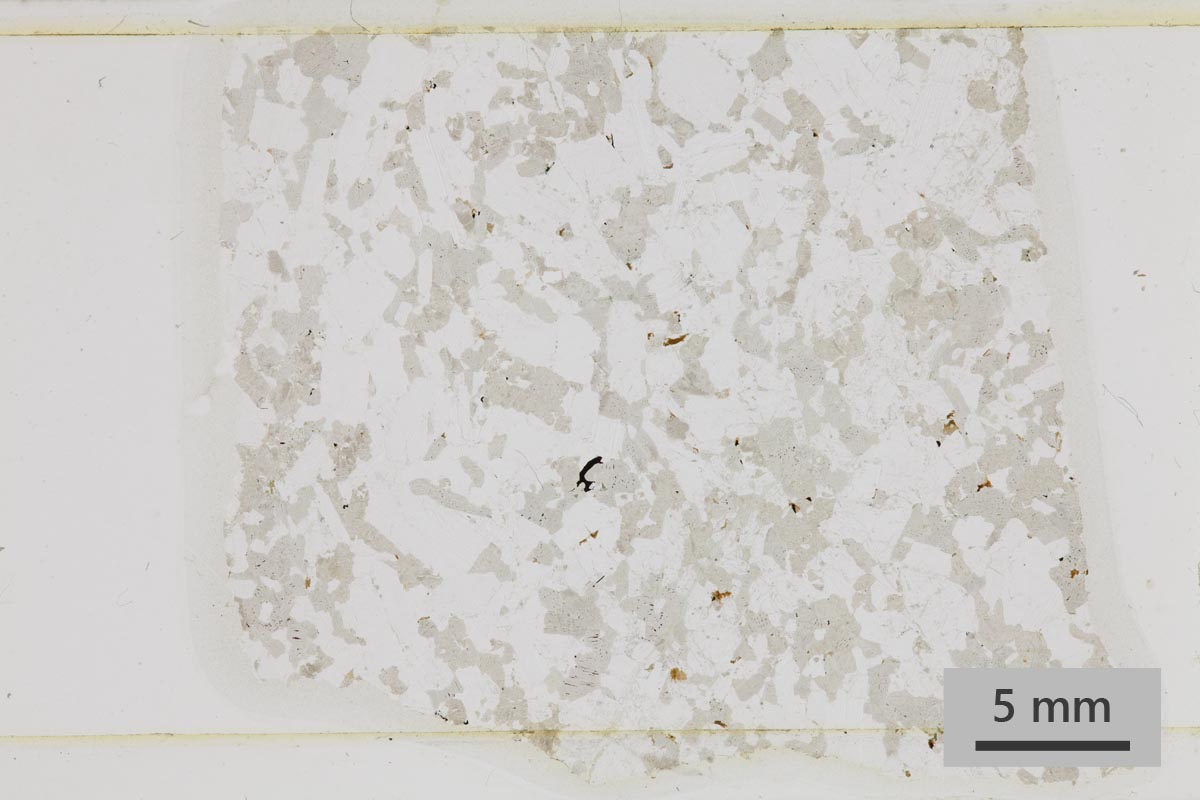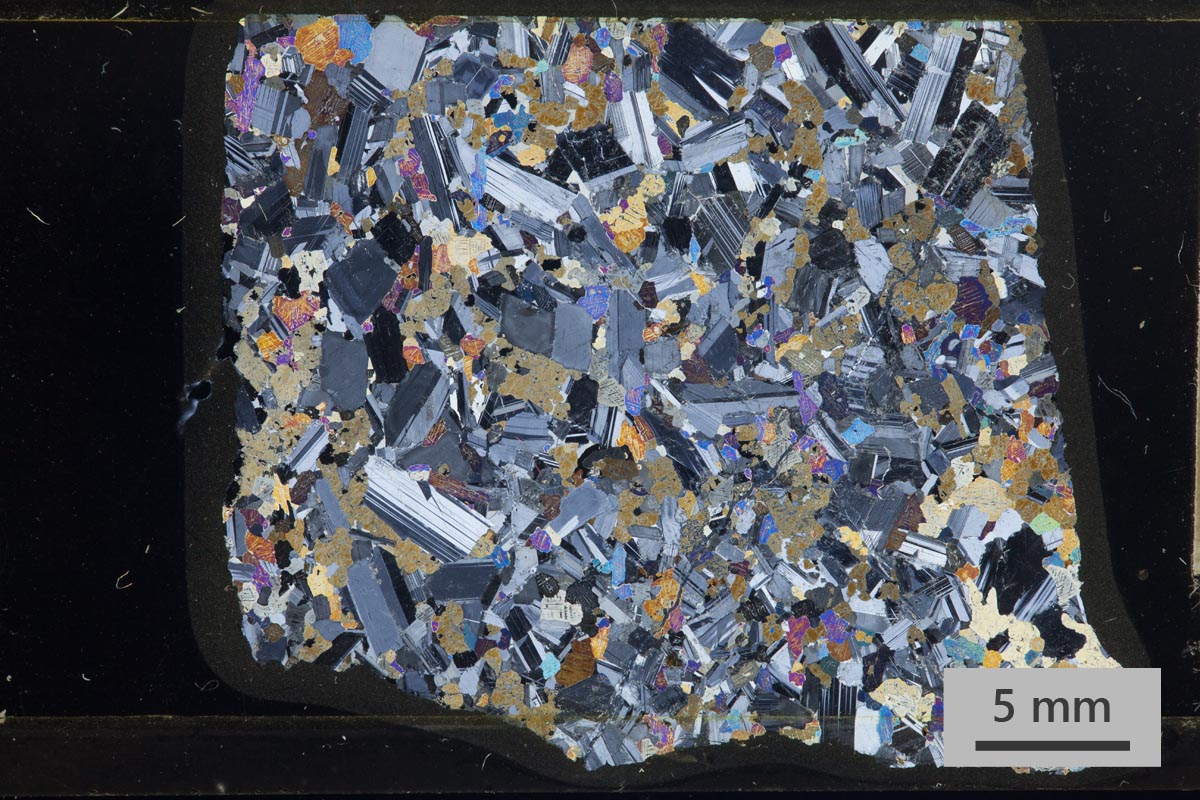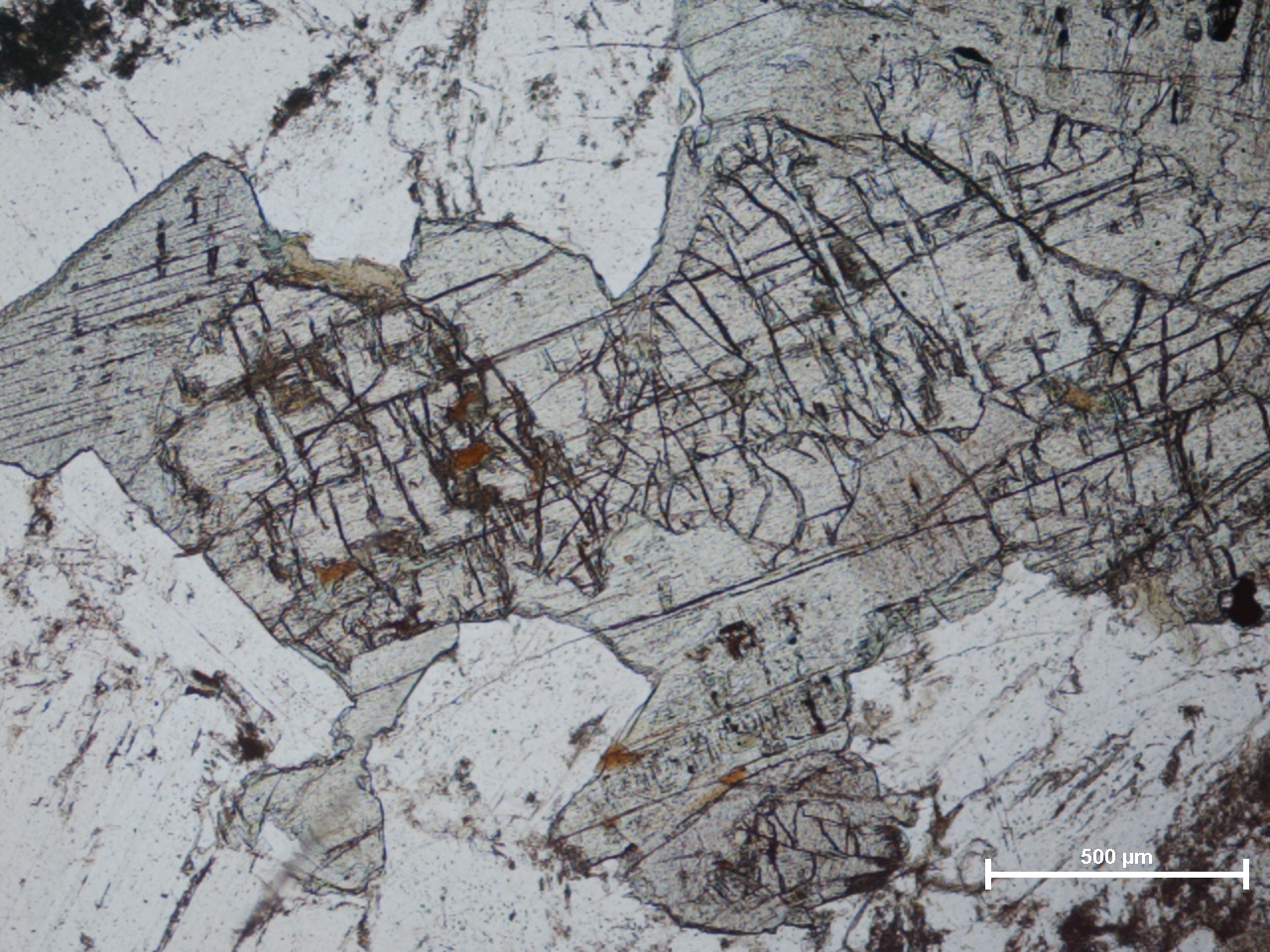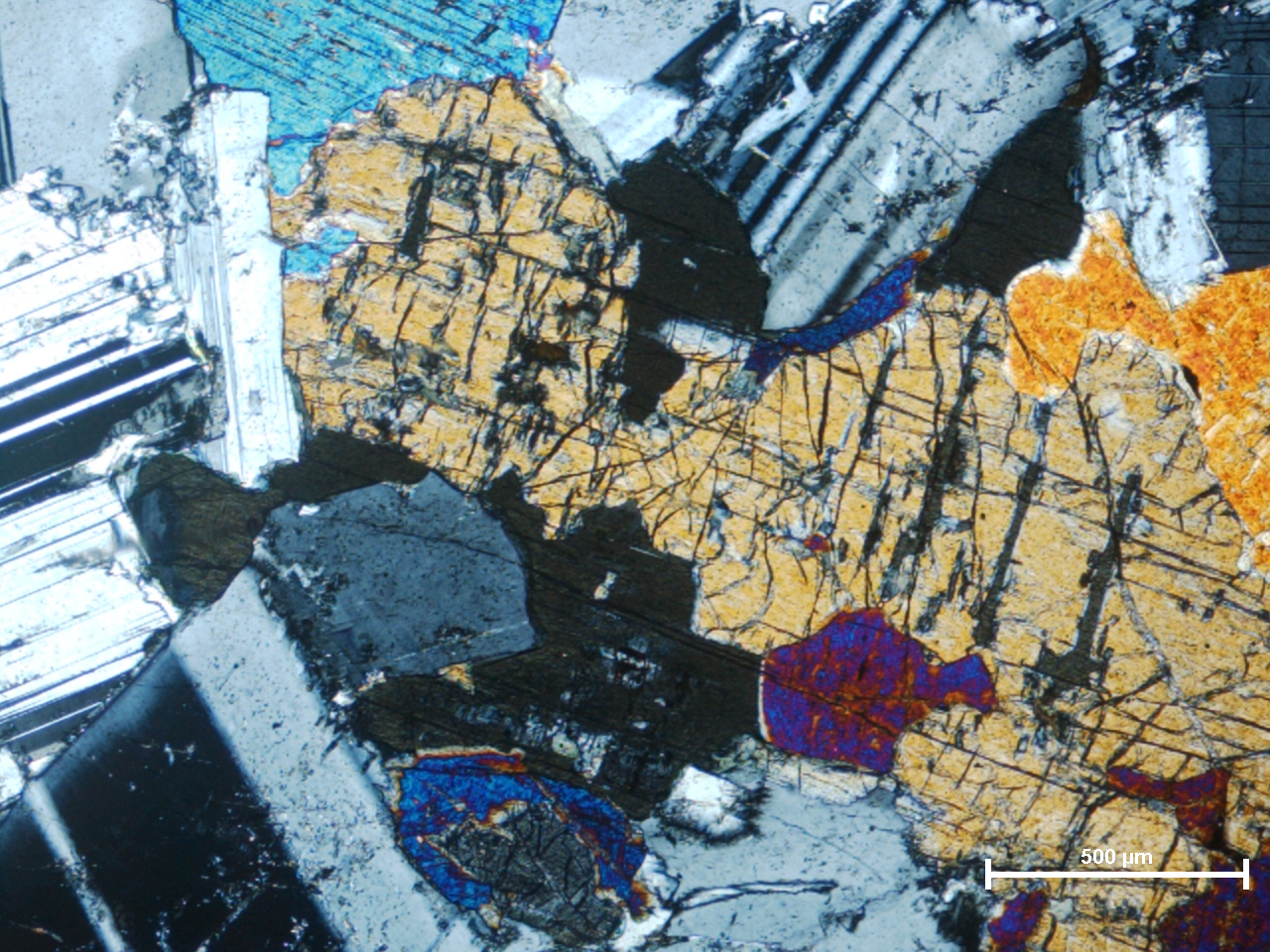  |
CSM Rock Collection
|
Gabbronorite, IG09GB01
|
DescriptionGabbronorite is a mafic igneous rock with significant amounts of orthopyroxene. The rock formed by crystallisation of a silicic high-magnesium basalt and is typically found in the evolved parts of layered, mafic-ultramafic intrusions. |
Hand specimen
|
|
|
Thin section |
Thin section in plane polarised light (full section) In plane-polarised light, the dominant plagioclase (white, low relief) and pyroxene (greenish-brownish grey, medium relief) can be recognised along with traces of biotite (brown, low relief) and opaque minerals. The different pyroxenes require cross polarised light for identification. |
Thin section in cross polarised light (full section) Under cross-polarised light, the characteristic multiple albite twinning of the plagioclase (variable grey-black, low relief) becomes apparent. The dominance of orthopyroxene (brown colours) over clinopyroxene (blue-red-purple) also becomes apparent by the abundance of grains with low interference colours. |
Thin section, detail
A close-up (plane-polarised) of the orthopyroxene reveals
the medium relief against the plagioclase and the
cleavages. The grain with thin exsolution lamellae (top
left corner) is clinopyroxene. Small grains of biotite
(brown) are associated with fractures and grain
boundaries.
Under crossed polarisers the different interference colours become apparent. Orthopyroxene has brown colours, while the clinopyroxene has red-blue-purple interference colours.
In cross polarised light, the straight extinction of the
orthopyroxene with reference to the dominant cleavage
becomes apparent as the grain is rotated. Note the
exsolution lamellae (grey) oriented near to vertical in
the image. 
This view in cross polarised light displays the cleavage
at a position away from extinction.
|